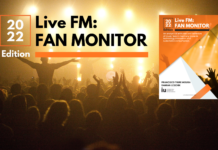The vinyl record is back!
When you live in big cities, like in Berlin, it is extremely easy to stumble upon fascinating black plates. With this we are not referring to manhole covers (even though sometimes you can find very artistic ones), but to vinyl records.
And this goes far beyond the mere music scene, more often vinyl records are harmoniously included in artistic installations. Or they are sold in concept stores among design objects… not mentioning the actual vinyl records’ presence on digital media (e.g. vinyl placed in scenes of TV shows, films, online advertisement, etc.).
Those are just a few examples. As a matter of fact vinyl records are more and more present in consumers’ lives.
Why is such a medium now back to trend?
For sure, the vinyl is a captivating object that adds some nostalgic feelings to those people who have always shared the retromania’s enthusiasm. May be it is a fundamental tool for those people who have a professional connection with music.
Nevertheless, those two categories are only a part of the total amount of the actual vinyl purchasers.
As reported in 2018 by the International Federation of the Phonographic Industry, the revenues from physical formats have experienced a reduction by 5.4% compared to the revenues of the previous year (2017), but, despite this fact vinyl sales have increased by 22.3%, making up almost the 4% of the total recorded music market.
But, to be fair, in the last years streaming services (both video and audio files) are leading the music industry (IFPI, 2017). Digitization has given a lot of mobility to music and has changed how we consume music. For these reasons, for many years, the vinyl record seemed to be an endangered species.
However, the more virtual consumption was growing, the more the vinyl was coming back to mainstream usage.
Why do some music listeners prefer the vinyl record over more efficient ways to enjoy music?
To answer this question, we present the main findings of an in-depth qualitative study with 12 vinyl records purchasers and listeners. We tackle both psychological and behavioral variables that are shaping the decision-making process. Those variables are linked to the whole purchase process, including the phase that antecedents the purchase, the moment of the purchase and the post-purchase processes.
The variables are initially considering a psychological component such as self-concept and evaluation, personality and lifestyle, which are then observed along with behavioral aspects such as consolidated purchasing practices linked to consumers’ information research and alternative evaluation.
First, we need to set the scene
During the 20th century, the social economy shifted from deep communal values towards a fast-paced cultural of unstable individualism and extreme materialism. This led to the hype for intangible products with less materiality, e.g. mp3. On the other hand, an increasing immateriality and the absence of empathy in direct human relationships, made the “coming back” of certain old and obsolete objects trendy.
Those objects might trigger an empathic feeling while consumption. Since the vinyl is one of these objects which creates empathy within its consumers, the first aspect that we considered is how those purchasers are evaluating their relationships with vinyl records.
The motives of vinyl record consumers
In our study, three main attitudes have emerged: (1) purchasers who for different reasons have developed an emotional relationship with vinyl; (2) purchasers who are exclusively physically owning this material object and (3) purchasers who have both these attitudes.
Considering the big picture, we found eight factors that drive consumer purchases of vinyl:
- Emotional fulfillment;
- Need for materiality;
- Sound quality;
- Tool for research (musical knowledge);
- Self-recognition;
- Social interaction;
- Emotional and financial support to the artists;
- Following the trends and appreciation of the esthetic component.

The reasons to choose the vinyl record
Secondly, it should be also taken into account why those purchasers have chosen specifically vinyl records in the world of physical media, instead of other formats.
In this case, our analysis revealed six key drivers: (1) the availability and variety of this medium in online and offline stores; (2) the fact that vinyl could be an inheritance from relatives; (3) the appreciation of specific physical characteristics of the object; (4) the fact that is currently a trendy medium, (5) the believe of the enjoyment of a better quality of sound and, especially for original first releases, (6) the fact that vinyl records are a piece of music history.
Furthermore, after having considered these main drivers, we investigated some behavioral preferences of the participants concerning the purchase phase, e.g. “where” the purchasers prefer to buy their records. There are basically two possibilities to buy vinyl: in-store and online.
Internal and external factors play a role
A purchaser could prefer one option over the other one considering both internal and external factors.
Internal factors are related to consolidated behaviors, such as for instance the tendency of a consumers to generally purchase online; the purchaser’s time availability and the need of experiencing an in-store discovery.
On the other hand, external factors deal with the place of residence of the purchasers, it has emerged that often people who live in rural areas have more difficulties to find vinyl rather than those who live in urban areas. Another important external factor is the desired vinyl itself (first release, limited edition and so on). Additionally, it is important where the vinyl is actually available, and in which stores it has a more convenient price.

Moreover, besides the point of purchase, consumers’ decision-making process takes into account also the status of existence of the vinyl record, and this referring to the fact that consumers have the possibility to choose between new and/or second-hand records. Connected to this aspect, other variables come into play: the need of authenticity and consistency with a genre and its history, plus the concern about the quality and the related attitude towards risk of a potential purchasers.
Furthermore, our study shows that purchasing records is linked to the need for materiality as well as to the physical relationship with a real object.
Concluding remarks
Besides these aspects, the practice of purchasing a vinyl, goes beyond the physical possession and tackles our worlds of memories and emotions.
The vinyl’s life cycle is a real-life example about how a product that was almost condemned to death could comeback. From its first invention, as a way to make music accessible, it has witnessed an endurance in the underground music scene as a skilled professional tool, then to its final revival thanks to its reintroduction in contemporary culture.
As a matter of fact, we can all agree, in the light of vinyl records’ history, everything is perfectly consistent with Emil Berliner’s vision about his invention: “making a ready-to-hand flat disc a medium of extraordinary longevity”.
…………………………………………………………………………………………….
Note: This article was written by Juliet Barbieri and Cansu Hattula based on Juliet Barbieri’s (2019) Master Thesis “Vinyl reconfigured revival in the digital era: Consumers motivations and purchasing patterns” at the IUBH Campus Berlin.





